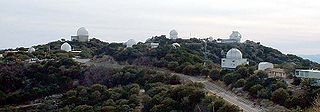
The Kitt Peak National Observatory (KPNO) is a United States astronomical observatory located on Kitt Peak of the Quinlan Mountains in the Arizona-Sonoran Desert on the Tohono O'odham Nation, 88 kilometers (55 mi) west-southwest of Tucson, Arizona. With more than twenty optical and two radio telescopes, it is one of the largest gatherings of astronomical instruments in the northern hemisphere.
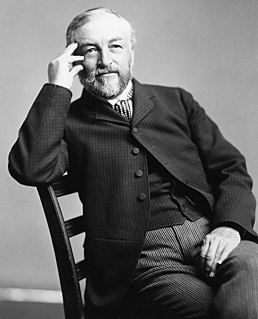
Samuel Pierpont Langley was an American aviation pioneer, astronomer and physicist who invented the bolometer. He was the third secretary of the Smithsonian Institution and a professor of astronomy at the University of Pittsburgh, where he was the director of the Allegheny Observatory.

The Mount Wilson Observatory (MWO) is an astronomical observatory in Los Angeles County, California, United States. The MWO is located on Mount Wilson, a 1,740-meter (5,710-foot) peak in the San Gabriel Mountains near Pasadena, northeast of Los Angeles.
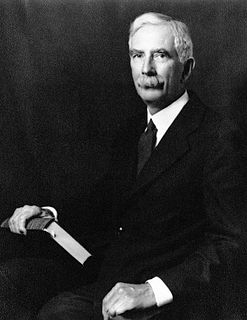
Charles Greeley Abbot was an American astrophysicist and the fifth secretary of the Smithsonian Institution, serving from 1928 until 1944. Abbot went from being director of the Smithsonian Astrophysical Observatory, to becoming Assistant Secretary, and then Secretary of the Smithsonian Institution over the course of his career. As an astrophysicist, he researched the solar constant, research that led him to invent the solar cooker, solar boiler, solar still, and other patented solar energy inventions.

The Oak Ridge Observatory, also known as the George R. Agassiz Station, is located at 42 Pinnacle Road, Harvard, Massachusetts. It was operated by the Harvard-Smithsonian Center for Astrophysics as a facility of the Smithsonian Astrophysical Observatory (SAO) from 1933 until August 19, 2005.

The Smithsonian Astrophysical Observatory (SAO) is a research institute of the Smithsonian Institution, concentrating on astrophysical studies including galactic and extragalactic astronomy, cosmology, solar, earth and planetary sciences, theory and instrumentation, using observations at wavelengths from the highest energy gamma rays to the radio, along with gravitational waves. Established in Washington, D.C., in 1890, the SAO moved its headquarters in 1955 to Cambridge, Massachusetts, where its research is a collaboration with the Harvard College Observatory (HCO) and the Harvard University Department of Astronomy. In 1973, the Smithsonian and Harvard formalized the collaboration as the Center for Astrophysics | Harvard & Smithsonian (CfA) under a single Director.

The Center for Astrophysics | Harvard & Smithsonian (CfA) is an astrophysics research institute jointly operated by the Harvard College Observatory and Smithsonian Astrophysical Observatory. Founded in 1973 and headquartered in Cambridge, Massachusetts, the CfA leads a broad program of research in astronomy, astrophysics, Earth and space sciences, as well as science education. The CfA either leads or participates in the development and operations of more than fifteen ground- and space-based astronomical research observatories across the electromagnetic spectrum, including the forthcoming Giant Magellan Telescope (GMT) and the Chandra X-ray Observatory, one of NASA's Great Observatories.
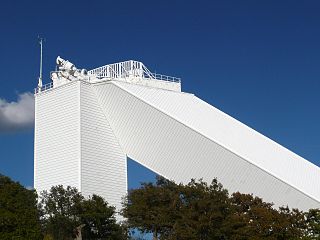
McMath–Pierce solar telescope is a 1.6 m f/54 reflecting solar telescope at Kitt Peak National Observatory in Arizona, United States. Built in 1962, the building was designed by American architect Myron Goldsmith and Bangladeshi-American structural engineer Fazlur Rahman Khan. It was the largest solar telescope and the largest unobstructed aperture telescope in the world. It is named after the astronomers Robert Raynolds McMath and Keith Pierce.

The Fred Lawrence Whipple Observatory is an American astronomical observatory owned and operated by the Smithsonian Astrophysical Observatory (SAO); it is their largest field installation outside of their main site in Cambridge, Massachusetts. It is located near Amado, Arizona on the summit, a ridge and at the foot of Mount Hopkins.

The Astronomical Observatory of Rome is one of twelve Astronomical Observatories in Italy. The main site of the Observatory is Monte Porzio Catone. Part of the Istituto Nazionale di Astrofisica since 2002.

The Solar Dynamics Observatory (SDO) is a NASA mission which has been observing the Sun since 2010. Launched on 11 February 2010, the observatory is part of the Living With a Star (LWS) program.
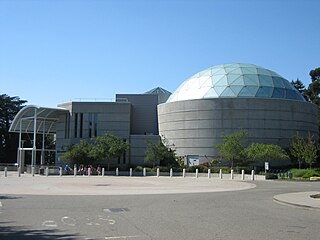
Chabot Space and Science Center, located in Oakland, California, is a center for science learning featuring interactive exhibits, planetariums, a large screen theater, hands-on activities and three powerful telescopes.
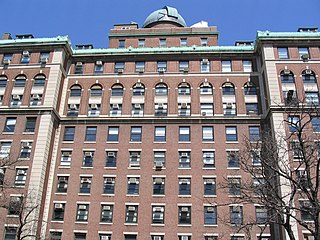
Rutherfurd Observatory is the astronomical facility maintained by Columbia University named after Lewis Morris Rutherfurd. Initially, Rutherfurd housed its telescopes and equipment in midtown Manhattan and later on the Stuyvesant Estate. When the Morningside campus was built, telescopes were kept in a "transit building" where the Interdisciplinary Science Building now stands. When Pupin Physics Laboratories were completed in 1927, the home of the observatory was moved to the top of the building. Below the Rutherfurd Observatory on the 14th floor was the site of Professor Wallace Eckert's Astronomical Laboratory, in which he constructed the first device to perform general scientific calculations automatically in 1933-34.

Hinode, formerly Solar-B, is a Japan Aerospace Exploration Agency Solar mission with United States and United Kingdom collaboration. It is the follow-up to the Yohkoh (Solar-A) mission and it was launched on the final flight of the M-V rocket from Uchinoura Space Center, Japan on 22 September 2006 at 21:36 UTC. Initial orbit was perigee height 280 km, apogee height 686 km, inclination 98.3 degrees. Then the satellite maneuvered to the quasi-circular sun-synchronous orbit over the day/night terminator, which allows near-continuous observation of the Sun. On 28 October 2006, the probe's instruments captured their first images.
The Brukkaros Solar Observatory was a solar observatory installed on Brukkaros Mountain in the ǁKaras Region of Namibia. It was financed and operated by a cooperation of the American National Geographic Society and the Smithsonian Institution, and it was operational between 1926 and 1931.
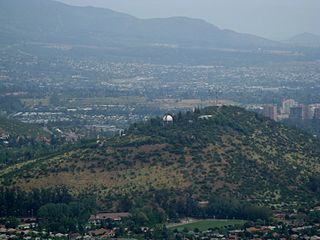
The National Astronomical Observatory of Chile is an astronomical observatory owned and operated by the Department of Astronomy of the University of Chile (UCh). It is located on Cerro Calán, a hill in the commune of Las Condes. The commune is an eastern suburb of Santiago located in Santiago Province of the Santiago Metropolitan Region. OAN was founded in 1852 and became a part of UCh in 1927. The facility on Cerro Calán was completed in 1962.
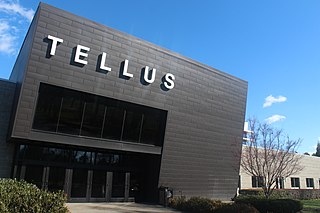
Tellus Science Museum is a natural history and science museum near Cartersville, Georgia with a facility of over 120,000 square feet. It is an affiliate of the Smithsonian Institution. The museum is open daily from 10:00 AM to 5:00 PM closing only on major holidays, and entrance fees vary. The museum also has multiple special events scheduled throughout the year, many revolving around the Bentley Planetarium and observatory facility. The largest displays consist of a very large fossil exhibit and mineral gallery.

Smithsonian Affiliations is a division of the Smithsonian Institution that establishes long-term partnerships with non-Smithsonian museums and educational and cultural organizations, in order to share collections, exhibitions and educational strategies and conduct joint research.
The Orbiting Astronomical Observatory 2 was the first successful space telescope, launched on December 7, 1968. An Atlas-Centaur rocket launched it into a nearly circular 750-kilometre (470 mi) altitude Earth orbit. Data was collected in ultraviolet on many sources including comets, planets, and galaxies. It had two major instrument sets facing in opposite directions; the Smithsonian Astrophysical Observatory (SAO) and the Wisconsin Experiment Package (WEP). One discovery was large halos of hydrogen gas around comets, and it also observed Nova Serpentis, which was a nova discovered in 1970.
The Sunspot Solar Observatory (SSO) is an astronomical observatory designed for the study of the Sun. The observatory is operated by New Mexico State University (NMSU) and the National Solar Observatory (NSO). It is split between operations at the telescope facility at Sunspot, New Mexico and data and management at the Department of Astronomy at New Mexico State University. The Sunspot telescope facility is in the Sacramento Mountains, approximately 18 miles (29 km) south of Cloudcroft. Access to the facility telescopes and grounds are open for to the public for guided tours. It is funded by the National Science Foundation in partnership with the state of New Mexico
















